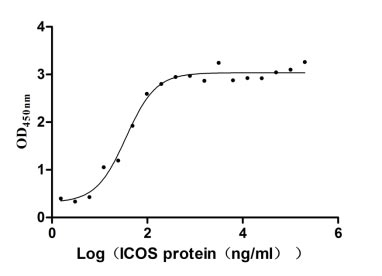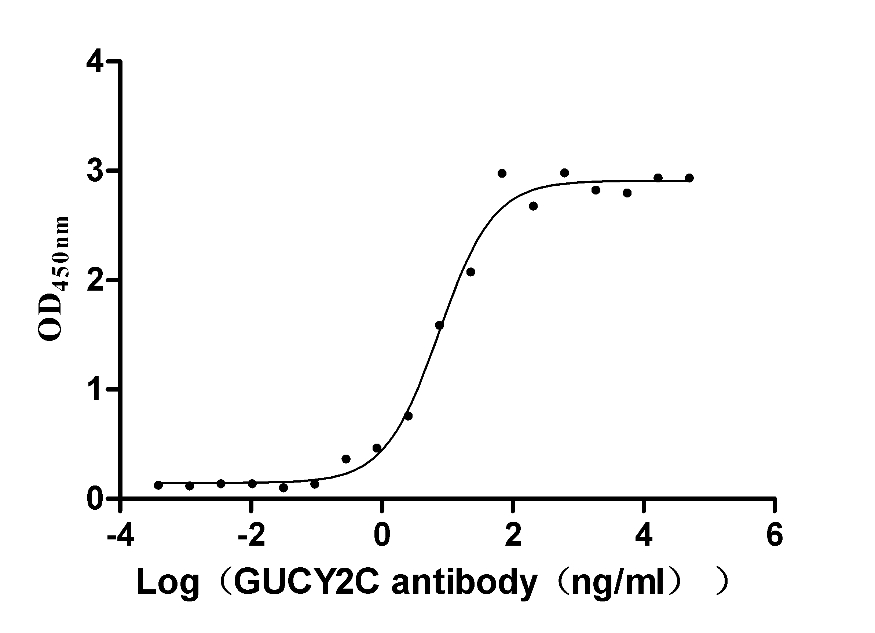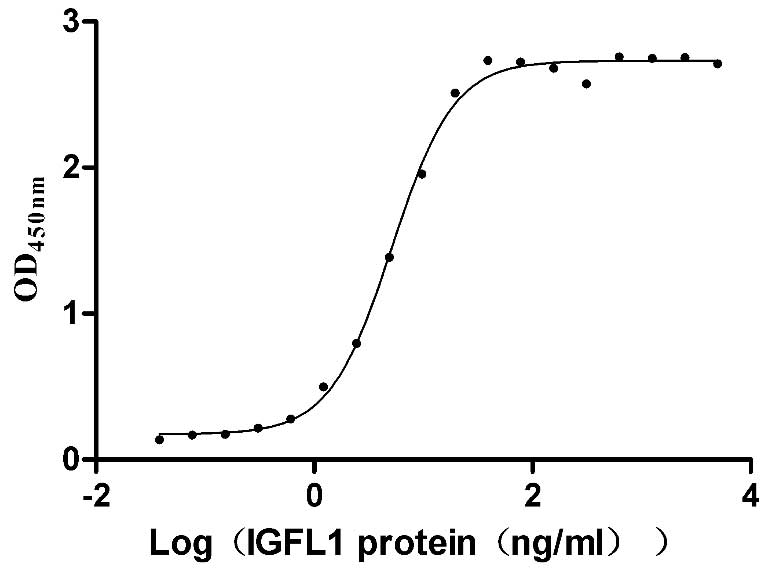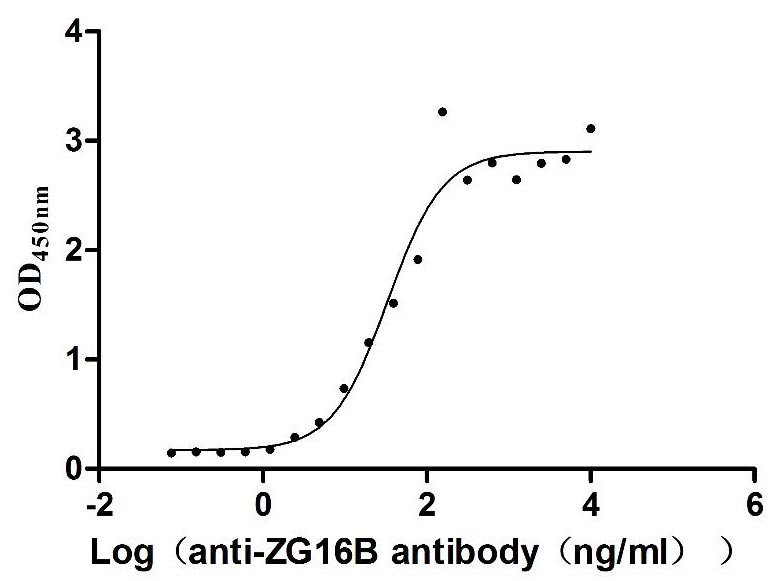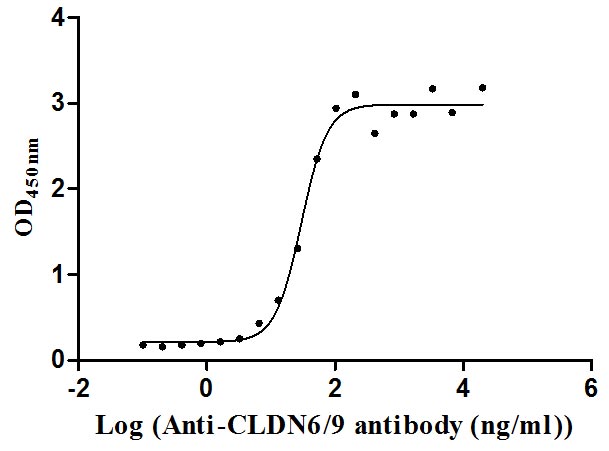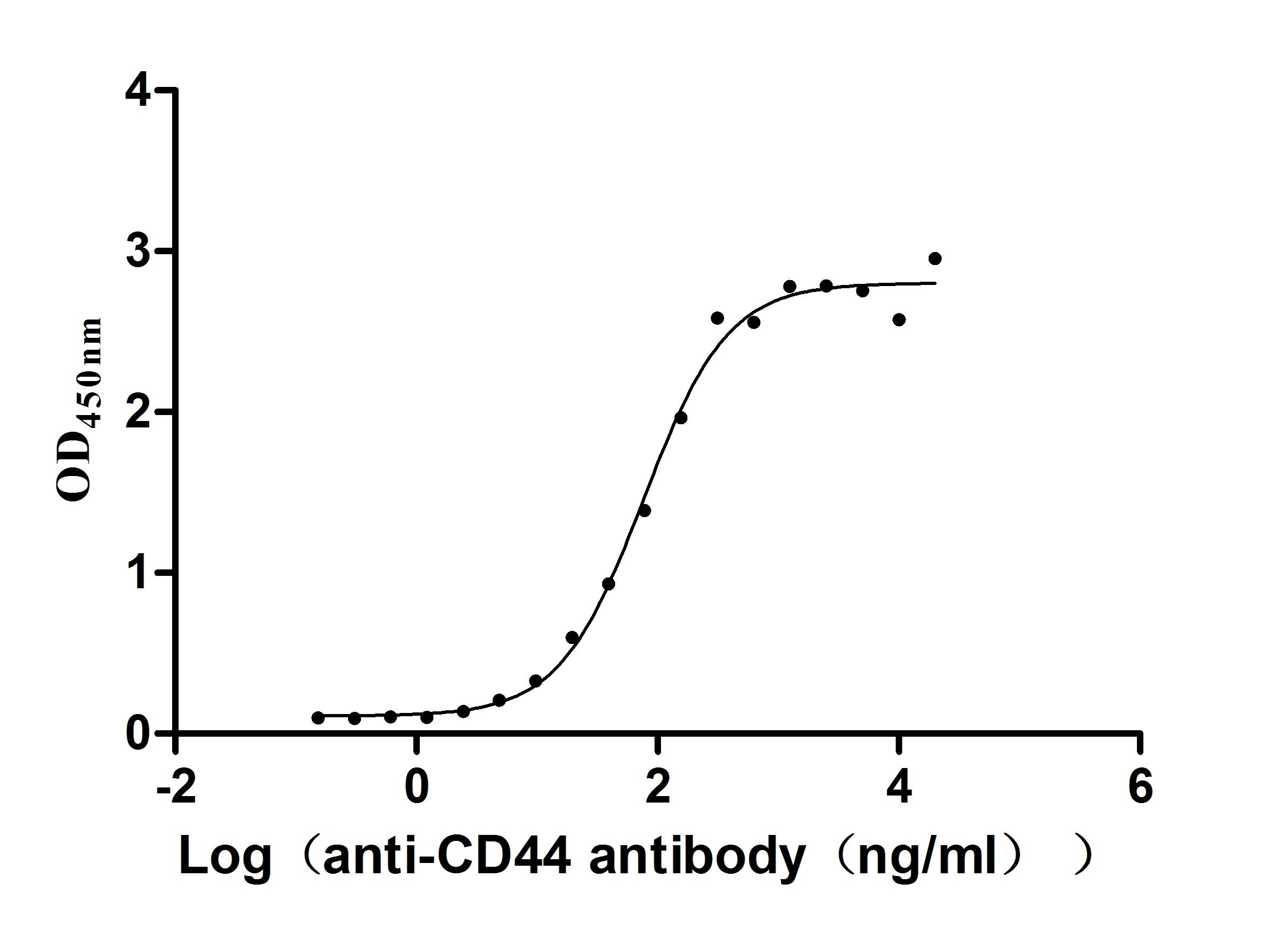Recombinant Saccharomyces cerevisiae Plasma membrane ATPase 1 (PMA1), partial
-
中文名稱:釀酒酵母PMA1重組蛋白
-
貨號:CSB-YP356437SVG
-
規(guī)格:
-
來源:Yeast
-
其他:
-
中文名稱:釀酒酵母PMA1重組蛋白
-
貨號:CSB-EP356437SVG
-
規(guī)格:
-
來源:E.coli
-
其他:
-
中文名稱:釀酒酵母PMA1重組蛋白
-
貨號:CSB-EP356437SVG-B
-
規(guī)格:
-
來源:E.coli
-
共軛:Avi-tag Biotinylated
E. coli biotin ligase (BirA) is highly specific in covalently attaching biotin to the 15 amino acid AviTag peptide. This recombinant protein was biotinylated in vivo by AviTag-BirA technology, which method is BriA catalyzes amide linkage between the biotin and the specific lysine of the AviTag.
-
其他:
-
中文名稱:釀酒酵母PMA1重組蛋白
-
貨號:CSB-BP356437SVG
-
規(guī)格:
-
來源:Baculovirus
-
其他:
-
中文名稱:釀酒酵母PMA1重組蛋白
-
貨號:CSB-MP356437SVG
-
規(guī)格:
-
來源:Mammalian cell
-
其他:
產(chǎn)品詳情
-
純度:>85% (SDS-PAGE)
-
基因名:PMA1
-
Uniprot No.:
-
別名:PMA1; YGL008C; Plasma membrane ATPase 1; EC 7.1.2.1; Proton pump 1
-
種屬:Saccharomyces cerevisiae (strain ATCC 204508 / S288c) (Baker's yeast)
-
蛋白長度:Partial
-
蛋白標(biāo)簽:Tag?type?will?be?determined?during?the?manufacturing?process.
The tag type will be determined during production process. If you have specified tag type, please tell us and we will develop the specified tag preferentially. -
產(chǎn)品提供形式:Lyophilized powder
Note: We will preferentially ship the format that we have in stock, however, if you have any special requirement for the format, please remark your requirement when placing the order, we will prepare according to your demand. -
復(fù)溶:We recommend that this vial be briefly centrifuged prior to opening to bring the contents to the bottom. Please reconstitute protein in deionized sterile water to a concentration of 0.1-1.0 mg/mL.We recommend to add 5-50% of glycerol (final concentration) and aliquot for long-term storage at -20℃/-80℃. Our default final concentration of glycerol is 50%. Customers could use it as reference.
-
儲存條件:Store at -20°C/-80°C upon receipt, aliquoting is necessary for mutiple use. Avoid repeated freeze-thaw cycles.
-
保質(zhì)期:The shelf life is related to many factors, storage state, buffer ingredients, storage temperature and the stability of the protein itself.
Generally, the shelf life of liquid form is 6 months at -20°C/-80°C. The shelf life of lyophilized form is 12 months at -20°C/-80°C. -
貨期:Delivery time may differ from different purchasing way or location, please kindly consult your local distributors for specific delivery time.Note: All of our proteins are default shipped with normal blue ice packs, if you request to ship with dry ice, please communicate with us in advance and extra fees will be charged.
-
注意事項(xiàng):Repeated freezing and thawing is not recommended. Store working aliquots at 4°C for up to one week.
-
Datasheet :Please contact us to get it.
靶點(diǎn)詳情
-
功能:The plasma membrane ATPase of plants and fungi is a hydrogen ion pump. The proton gradient it generates drives the active transport of nutrients by H(+)-symport. The resulting external acidification and/or internal alkinization may mediate growth responses.
-
基因功能參考文獻(xiàn):
- Pma1 physically interacts with Exo1. PMID: 28727280
- These data confirm the important role of Asp739 and Arg811 residues for the biogenesis and function of the enzyme, suggesting their importance for defining H+ transport determinants but ruling out, however, the existence of a strong ionic bond (salt bridge) between these two residues and/or importance of such bridge for structure-function relationships in Pma1 H+-ATPase. PMID: 28320286
- These results indicate changes in the cell lipid composition. Western blot analysis showed the induction of Pma1 level by IM. RT-PCR revealed an increased PMA1 expression after IM treatment. PMID: 27966483
- Therefore, H(+) extrusion by Pma1 may be important for Ca(2+) influx through Cch1/Mid1. These results suggest that Pma1 interacts physically with Cch1/Mid1 Ca(2+) channels to enhance their activity via its H(+) -pumping activity PMID: 27935186
- The results prove that Pma1 residues Ser899 and Ser911/Thr912 are phosphorylated in vivo during glucose activation and that these phosphorylations require the first step of glucose metabolism. PMID: 26019146
- Results suggest that M5 and M6 loop of Pma1 H+-ATPaseplay play an important role in the protein stability and function. PMID: 24256122
- M5-M6 loop residues play an important role in protein stability and function, and they are probably responsible for proper arrangement of transmembrane segments M5 and M6 and other domains of enzyme. This might also be important for regulation of enzyme. PMID: 25754037
- propose a model in which Sod1p maximizes Pma1p activity in two ways: one involving signaling through CK1gamma casein kinases and an independent role for Sod1p in oxidative stress protection PMID: 25956063
- The results indicate the important role for the Pma1 Asp-714 residue in biogenesis, structure stability, and enzyme function. PMID: 25707108
- loss of V-ATPase-mediated organelle acidification signals ubiquitination, internalization, and degradation of a portion of Pma1p as a means of balancing overall pH homeostasis PMID: 25271159
- C-terminus profoundly influences the structure, biogenesis, and function of the yeast H+-ATPase. PMID: 24186948
- These results indicate that the induction of the two cell transporter genes(Pdr12 and PMA1) plays an important role in acid excretion by the aci mutants of Saccharomyces cerevisiae. PMID: 23667093
- suppressor mutations disrupt the interaction between the mutant and wild type enzymes, and this enables the wild type Pma1 to reach the plasma membrane PMID: 23825623
- Negative interaction between PMA1e and MKT1e is mediated by alterations in intracellular pH. PMID: 21856932
- Point mutations in Pma1 H+-ATPase of Saccharomyces cerevisiae: influence on its expression and activity PMID: 21073429
- the backbone carbonyl oxygen of Ile-282 contributes directly to proton translocation in PMA1 PMID: 15829483
- Results suggest that ubiquitylation of Pma1-10 represents a component of a quality control mechanism that targets the misfolded protein for removal from the plasma membrane. PMID: 16410553
- the Ptk2 carboxyl terminus is essential for glucose-dependent Pma1 activation and for the phosphorylation of Ser899 PMID: 16510118
- Yeast Pma1 H+-ATPase serves as a model for the role of the C-terminal membrane domain in ATPase stability and targeting to the plasma membrane. PMID: 16751629
- analysis of degradation pathways for misfolded mutants of the yeast plasma membrane ATPase, Pma1 PMID: 16928681
- the cooperation of endoplasmic reticulum-associated degradation pathway and the cytoplasm to vacuole targeting pathway is needed for an efficient degradation of misfolded Pma1. PMID: 17238920
- a mechanism in which the stepwise phosphorylation of two tandemly positioned residues near the C terminus mediates glucose-dependent activation of the H(+)-ATPase. PMID: 17932035
- Changes in ribosome biogenesis caused by loss of Yvh1 or specific ribosomal proteins have effects on the plasma membrane, perhaps by producing specific translational changes. PMID: 19114459
顯示更多
收起更多
-
亞細(xì)胞定位:Cell membrane; Multi-pass membrane protein.
-
蛋白家族:Cation transport ATPase (P-type) (TC 3.A.3) family, Type IIIA subfamily
-
數(shù)據(jù)庫鏈接:
KEGG: sce:YGL008C
STRING: 4932.YGL008C
Most popular with customers
-
Recombinant Human ICOS ligand (ICOSLG), partial (Active)
Express system: Mammalian cell
Species: Homo sapiens (Human)
-
Recombinant Human Heat-stable enterotoxin receptor (GUCY2C), partial (Active)
Express system: Mammalian cell
Species: Homo sapiens (Human)
-
Recombinant Human IGF-like family receptor 1 (IGFLR1), partial (Active)
Express system: Mammalian cell
Species: Homo sapiens (Human)
-
Recombinant Mouse Tyrosine-protein kinase Mer (Mertk), partial (Active)
Express system: Mammalian cell
Species: Mus musculus (Mouse)
-
Recombinant Human Pancreatic adenocarcinoma up-regulated factor (ZG16B) (Active)
Express system: Mammalian cell
Species: Homo sapiens (Human)
-
Recombinant Human Claudin-9 (CLDN9)-VLPs (Active)
Express system: Mammalian cell
Species: Homo sapiens (Human)
-
Recombinant Macaca fascicularis CD44 antigen (CD44), partial (Active)
Express system: Mammalian cell
Species: Macaca fascicularis (Crab-eating macaque) (Cynomolgus monkey)
-
Recombinant Human V-set and immunoglobulin domain-containing protein 4 (VSIG4), partial (Active)
Express system: Mammalian cell
Species: Homo sapiens (Human)


